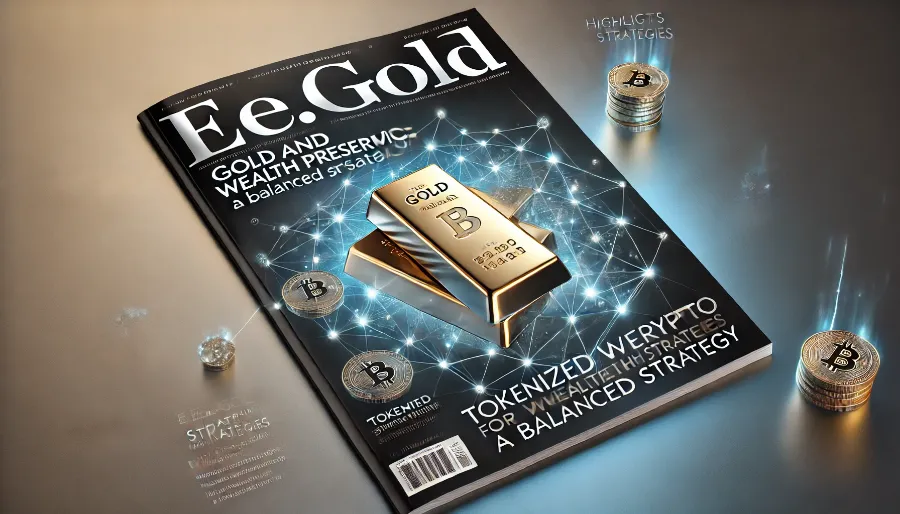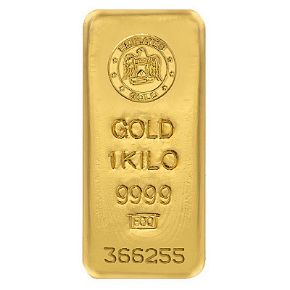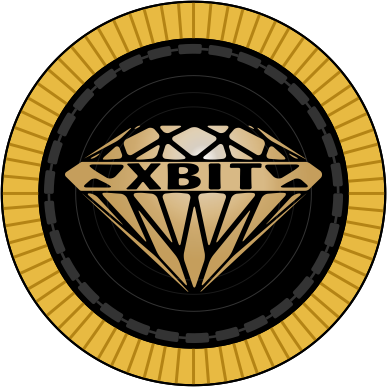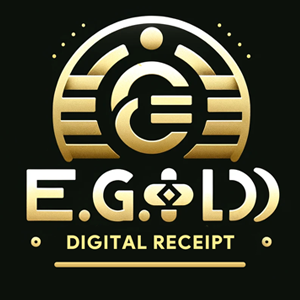
Table of Contents
- Why Wealth Preservation Is Crucial for Investors
- The Role of Gold in Securing Wealth Over Time
- Cryptocurrencies as a Modern Tool for Wealth Protection
- Gold and Crypto: Complementary Assets for Investment Success
- Diversifying Your Portfolio with Gold and Cryptocurrency
- Tokenized Gold: Bridging Traditional and Digital Investments
- How Gold Supports Long-Term Wealth Preservation
- The Advantages of Cryptocurrencies for Wealth Management
- Risks and Challenges in Gold and Crypto Investments
- Market Dynamics Driving Gold and Cryptocurrency Adoption in 2025
- Gold and Crypto in Decentralized Finance (DeFi): A New Frontier
- Regulatory Developments Impacting Gold and Crypto Investments
- Combining Physical Gold with Digital Assets for Portfolio Growth
- Strategic Approaches to Balancing Gold and Crypto Investments
- Frequently Asked Questions About Using Gold and Crypto for Wealth Preservation
Why Wealth Preservation Is Crucial for Investors
Wealth preservation involves protecting the value of assets against inflation, economic instability, and market volatility. This strategy ensures financial security over time, especially during economic downturns. Gold and cryptocurrencies have emerged as vital tools for preserving wealth in the modern era.
The Role of Gold in Securing Wealth Over Time
Gold has been a reliable store of value for centuries. Its intrinsic value, scarcity, and historical stability make it a preferred asset for preserving wealth. During times of inflation or economic uncertainty, gold typically retains or increases in value, serving as a hedge against currency devaluation.
Cryptocurrencies as a Modern Tool for Wealth Protection
Cryptocurrencies like Bitcoin are increasingly seen as digital gold. With a fixed supply and decentralized nature, Bitcoin provides an alternative to fiat currencies that are prone to inflation. Other cryptocurrencies, like Ethereum, contribute to wealth preservation through their utility in decentralized finance (DeFi) and technological innovations.
Gold and Crypto: Complementary Assets for Investment Success
Gold and cryptocurrencies complement each other in wealth preservation strategies. Gold offers stability and acts as a hedge, while cryptocurrencies provide growth potential and diversification. Combining these assets allows investors to balance risk and reward effectively.
Diversifying Your Portfolio with Gold and Cryptocurrency
Diversifying a portfolio with gold and cryptocurrencies mitigates risks associated with market volatility. A well-balanced allocation of these assets ensures stability from gold and the upside potential from cryptocurrencies, providing resilience in uncertain times.
Tokenized Gold: Bridging Traditional and Digital Investments
Tokenized gold combines the stability of gold with the accessibility and liquidity of blockchain technology. Platforms like PAX Gold (PAXG) and Tether Gold (XAUT) enable investors to own gold-backed tokens, seamlessly integrating traditional wealth preservation with digital innovation.
How Gold Supports Long-Term Wealth Preservation
- Stability: Gold is less volatile compared to most other assets.
- Hedge Against Inflation: Gold retains value even during economic crises.
- Universal Acceptance: Gold is globally recognized and trusted.
- Physical Asset: Tangibility adds a layer of security.
The Advantages of Cryptocurrencies for Wealth Management
- Decentralization: Free from government control or inflationary policies.
- Growth Potential: Cryptocurrencies like Bitcoin have shown remarkable long-term appreciation.
- Blockchain Security: Transactions are transparent and secure.
- Accessibility: Digital nature allows for global use and liquidity.
Risks and Challenges in Gold and Crypto Investments
- Gold Risks: Price influenced by central bank policies, geopolitical stability, and market demand.
- Crypto Risks: High volatility, regulatory uncertainty, and susceptibility to technological risks.
- Custody Concerns: Ensuring secure storage for physical gold and private keys for cryptocurrencies.
Market Dynamics Driving Gold and Cryptocurrency Adoption in 2025
- Inflation Concerns: Investors seek alternatives to devaluing fiat currencies.
- Digital Transformation: Growing adoption of blockchain and digital assets.
- Geopolitical Uncertainty: Gold’s safe-haven appeal and crypto’s borderless nature gain traction.
Integration of Gold and Crypto in Decentralized Finance (DeFi)
DeFi platforms enable investors to use gold-backed tokens and cryptocurrencies for earning yields, borrowing, or staking. This integration expands the utility of these assets while preserving their core value as wealth storage tools.
Regulatory Considerations for Gold and Crypto Investments
Governments worldwide are introducing frameworks to regulate gold and crypto investments. Compliance with anti-money laundering (AML) and know-your-customer (KYC) policies ensures safe and transparent transactions for investors.
Combining Physical Gold and Digital Assets
Investors can combine physical gold with digital assets like Bitcoin or tokenized gold to diversify wealth preservation strategies. This approach balances the tangibility of gold with the growth potential of digital innovation.
Strategies for Balancing Gold and Crypto in Portfolios
- Risk Tolerance: Allocate higher percentages to gold for stability and more to crypto for growth, depending on risk appetite.
- Periodic Rebalancing: Adjust the portfolio as market conditions and personal financial goals evolve.
- Use of Hybrid Assets: Include tokenized gold to integrate both traditional and digital wealth-preservation tools.
FAQs About Gold and Crypto for Wealth Preservation
1. Why is gold considered a reliable wealth-preservation tool?
Gold’s intrinsic value, scarcity, and historical performance make it a stable asset for hedging against inflation and economic downturns.
2. Can cryptocurrencies effectively preserve wealth?
Yes, cryptocurrencies like Bitcoin offer long-term growth potential and act as a hedge against fiat currency inflation.
3. How does tokenized gold work?
Tokenized gold represents physical gold on a blockchain, allowing for fractional ownership and digital transactions.
4. What is the best way to diversify with gold and crypto?
Combine physical gold for stability and cryptocurrencies for growth, or use tokenized gold to integrate both asset types.
5. Are gold-backed tokens secure?
Yes, provided they are issued by reputable platforms with audited reserves and robust security measures.
6. What are the risks of using crypto for wealth preservation?
Crypto risks include volatility, regulatory uncertainty, and cybersecurity threats.
7. Can I use gold and crypto in decentralized finance (DeFi)?
Yes, gold-backed tokens and cryptocurrencies are increasingly integrated into DeFi platforms for lending, staking, and liquidity.
8. How should I allocate my portfolio between gold and crypto?
Allocation depends on risk tolerance. Conservative investors may favor gold, while aggressive investors may lean toward crypto.
9. What is the future of gold and crypto in wealth preservation?
Gold and crypto will continue to play key roles, with increasing adoption of tokenized assets and integration into global financial systems.
10. Are there tax implications for gold and crypto investments?
Yes, tax laws vary by country. Consult with a tax advisor to understand the implications for both asset types.
11. How does geopolitical instability impact gold and crypto for wealth preservation?
Geopolitical instability typically drives investors toward gold as a safe haven, increasing its value. Cryptocurrencies may also gain traction during such periods, particularly in regions experiencing currency devaluation or financial restrictions.
12. Can gold-backed cryptocurrencies replace physical gold?
Gold-backed cryptocurrencies complement physical gold by offering a more accessible, liquid, and digital way to invest in gold. However, physical gold remains valuable for its tangibility and cultural significance.
13. What is the role of stablecoins in wealth preservation compared to gold?
Stablecoins, like USDC or USDT, are pegged to fiat currencies and offer short-term stability but are subject to inflation. Gold provides long-term wealth preservation through intrinsic value, while stablecoins are useful for liquidity.
14. How do tokenized gold and cryptocurrencies interact in the same portfolio?
Tokenized gold provides stability, while cryptocurrencies offer growth potential. Together, they balance risk and reward, enabling investors to hedge volatility while capturing market opportunities.
15. Are institutional investors using gold and crypto for wealth preservation?
Yes, institutional investors are increasingly diversifying portfolios with both gold and cryptocurrencies. Gold remains a trusted hedge, while Bitcoin and other digital assets are seen as innovative stores of value.
16. How does inflation affect gold and crypto investments?
Inflation typically boosts gold prices as a hedge, while cryptocurrencies like Bitcoin, with capped supplies, also attract investors seeking alternatives to inflation-prone fiat currencies.
17. What are some platforms for investing in gold and crypto together?
Platforms like Vaultoro, BitPanda, and Kinesis Money enable trading between gold and cryptocurrencies. DeFi protocols also integrate gold-backed tokens for additional utility.
18. What is the long-term outlook for gold and crypto in wealth preservation?
The outlook is promising, with gold maintaining its position as a stability cornerstone and cryptocurrencies driving innovation. Tokenized gold and blockchain adoption will further integrate these assets into mainstream portfolios.
19. How can gold and crypto help preserve wealth in emerging markets?
In emerging markets, gold offers a hedge against currency instability, while cryptocurrencies provide financial inclusion, enabling people to store and transfer wealth beyond traditional banking systems.
20. What role will technology play in shaping the future of wealth preservation?
Technology will enhance accessibility, transparency, and utility for both gold and cryptocurrencies. Innovations like AI-driven portfolio optimization, advanced blockchain protocols, and global tokenized gold markets will reshape how wealth is preserved.
Gold and cryptocurrencies represent a powerful combination for modern wealth preservation. By leveraging the stability and historical reliability of gold with the innovation and growth potential of cryptocurrencies, investors can navigate economic uncertainties and build portfolios that are resilient and future-ready.
NOTE
This Content is the copyrighted content of EE.GOLD. All rights are reserved. You are welcome to share or use our content only by including direct links to our website. Any other form of reproduction, distribution, or use without proper attribution is strictly prohibited.
This Content is intended solely for educational purposes. The information provided does not constitute financial or investment advice.
Please note that Digital Storage Receipt, Secure Storage Solutions, and Physical Gold Sales are the only services offered by EE.GOLD.
We strictly adhere to government regulations and are firmly against all illegal financial or investment activities globally.
For further inquiries, feel free to contact us through our official channels.










.png)

